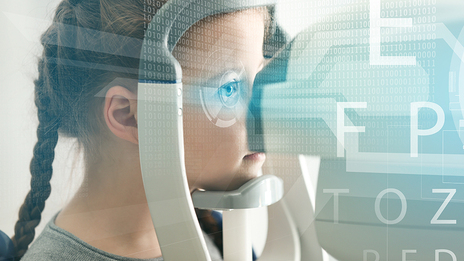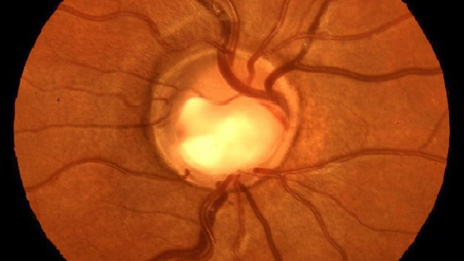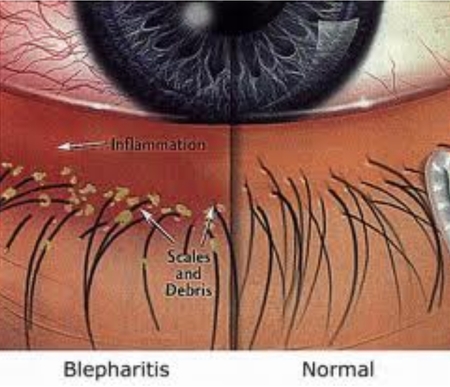
What is Blepharitis?
Blepharitis refers to inflammation of the eyelid margins. There are two broad categories of the condition - Anterior Blepharitis and Posterior Blepharitis.
Anterior Blepharitis

Anterior Blepharitis affects the front part of the eyelid margin, near the roots of the eyelashes. It is commonly caused by bacteria that normally live on our skin, that produce an irritative toxin that causes inflammation. The lid margin often looks 'crusty' and when seen under a microscope, the appearance can be similar to dandruff. Anterior Blepharitis can cause the eyelids to become red, itchy and sometimes slightly swollen too.
Posterior Blepharitis
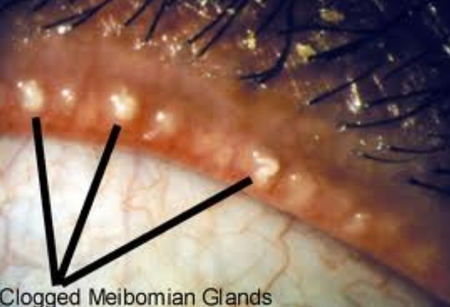
Posterior Blepharitis is also referred to as Obstructive Meibomian Gland Disease. The meibomian glands are located within the eyelid, and the pores of the glands open onto the lid margin, behind the roots of the eyelashes. The glands normally produce a special oily secretion for the tears. The meibomian glands sometimes become inflamed and blocked, causing a reduction in amount, and disturbance in quality of the oily secretions. This can not only cause eyelid margin irritation, but also has secondary dry eye effects on the ocular surface.
Who Gets Blepharitis?
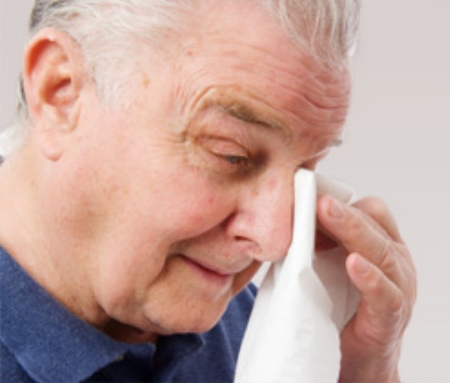
Blepharitis is very common indeed - 5% of eye problems in primary care are said to be related to blepharitis. People of any age can be sufferers, but it is more common in older people over the age of 50. It is not something 'caught' or inherited. The reason for some people developing blepharitis is poorly understood.
What are the symptoms of blepharitis?
People who have blepharitis may not suffer from any symptoms at all. However, for those that do report symptoms, one or any combination of the following symptoms are common:
- Irritation of the eyelids and/or eyes
- Redness of the eyes
- Sore eyelids - sometimes red and swollen lid margins
- Crusting of the eyelid margins
- Eyelids may stick together on waking in mornings
- Burning and tearing of the eyes
- Gritty sensation in eyes
- Pain on looking at bright lights (photophobia)
- Small eyelid margin cysts
How Is Blepharitis Diagnosed?
Blepharitis is normally diagnosed in primary care by GPs on the clinical history alone. When a slit lamp microscope is available, for example at the optometrist's or ophthalmologist's clinic, the lid margin can be examined closely. Simple visualisation of the lid margin along with the history is how the diagnosis is normally made.
How Is Blepharitis Treated?
Unfortunately, there is not a definitive cure for blepharitis. There are many different ways clinicians have managed patients with blepharitis over the years. The fact there is not a definitive treatment is an indicator that no single treatment works significantly better than all others.
Lid Margin Cleaning
Both types of blepharitis can be helped with what is commonly referred to as 'lid margin hygiene'. Put simply, this means regular cleaning of the lid margins. The use of the following regimen works for most people. The use of additives to water such as baby shampoo or sodium bicarbonate may actually increase the amount of irritation, and so at least initially, this is not recommended. Use clean hot tap water ( boiled sterile water is not necessary).
- Take a flannel and soak in hot tap water (not too hot)
- Place the flannel onto the closed eye and apply gentle pressure for 30 seconds to 1 minute, or until the flannel cools
- Then, take the flannel, and again wet with hot clean tap water.
- Use this flannel to scrub along the lid margin (top and bottom eyelids), being sure to scrub the area at the roots of the lashes. Do this for a good 30 seconds to 1 minute. Don't use cotton wool, as it is too smooth and doesn't remove debris as well as a simple clean cloth.
- Repeat on the other side.
Carry out this cleaning regimen twice a day for at least a month. Most people will experience a reduction in symptoms. If not, seek expert help from your optometrist who will be able to make further recommendations, or refer you to an ophthalmologist if required. Other management measures are briefly mentioned below.
Avoid Irritants
Minimising chemical irritants that include certain eye drop preservatives and makeup can help reduce blepharitis symptoms.
Dietary Changes
There is some evidence to suggest omega 3 oils such as those in Flax-seed can improve the quality of meibomian gland secretions.
Antibiotics
Occasionally, if there is marked bacterial anterior inflammation, or if there is an associated skin condition such as seborrheic dermatitis, or even Rosacea, your doctor may prescribe antibiotic eye ointment, or indeed oral tablets.
